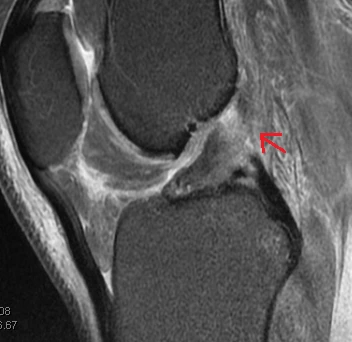Knees are vulnerable to injury, particularly for athletes who regularly jump, pivot, twist, and tackle. Perhaps one of the most cringe-inducing injuries for athletes, coaches, and sports fans alike is the dreaded ACL tear.
What is the ACL?
The ACL, or anterior cruciate ligament, is one of the stabilizing structures inside the knee joint. The ACL runs diagonally from the end of the femur (thigh bone) to the front portion of the tibia (shin bone) deep within the knee joint. It crosses alongside the PCL, or posterior cruciate ligament.
What does a healthy ACL do?
The ACL helps to prevent excessive sliding of the tibia in front of the femur. It also provides rotational stability to the knee joint.
Why is the ACL particularly susceptible to injury?
The ACL is the most common ligament in the knee to suffer injury. If the shin bone translates, or moves, forward excessively on the thigh bone and rotates, it can cause the ACL to stretch and tear partially or completely.
This vulnerability is due to the anatomy of the hips and knees and a lack of muscle support structures to protect the ACL from experiencing high levels of strain during jumping, landing, or cutting movements. Our long legs and relatively straight-kneed gait mechanics prevent our knees from being better adapted to these motions.
What are the common causes of ACL injuries?
The knee can experience excessive strain on the ACL that leads to rupture as a result of:
- Direct impact or contact against the knee, such as
- A helmet to the outside of the knee during a football game
- Indirect or non-contact mechanisms, such as
- Pivoting away from a defender on the soccer field
- Jumping to shoot a basket and landing with all body weight on a single leg
- Twisting with one foot planted during a dance routine

What are the symptoms of an ACL injury?
When the ACL is injured, one may feel or even hear a “pop” within the knee, often accompanied by immediate and significant swelling in the knee joint. This swelling is due to bleeding from the ligament’s tearing.
It’s typically difficult to walk at first, and the knee can have sensations of pain, tenderness, and instability. After a few days, the swelling and pain may dissipate, but the instability will persist.
HOW IS A TORN ACL DIAGNOSED?
On physical examination of the knee, certain testing maneuvers can determine whether the ACL feels to be functional in preventing excessive pivoting of the shin bone with respect to the end of the thigh bone.
Ultimately, an MRI will confirm the diagnosis of a torn ACL and is helpful in determining whether other ligaments, cartilage or meniscus structures in the knee have suffered an injury, as well.
What steps should someone take if they might have a torn ACL?
If you suffer an injury as described above, it’s best to rest, ice, and elevate the knee to reduce swelling. It’s important for a medical provider to evaluate a swollen knee, as the swelling may indicate that the ACL – or meniscus, cartilage, and/or other ligaments – has been injured and needs treatment.
Symptoms are the ultimate guide to the urgency for evaluation. If walking becomes progressively easier and pain improves, the injury can be evaluated non-emergently, such as with an orthopedic specialist in the office.
However, the inability to bend or straighten the knee or intolerance to bearing weight on the injured leg indicates the need for a more urgent evaluation at an urgent care location. From there, you may be directed to a specialist. While waiting for definitive evaluation, using crutches to assist with walking can help protect the knee from weight-bearing forces.
Don't waste time searching for answers when you or a loved one is injured. Use the HURT! app to find the better choice of next step for your injury. Whether it's scheduling an appointment at orthopedic urgent care or arranging an office visit with an orthopedic specialist, the HURT! app has you covered.
Dr. Bryan M. Saltzman, MD, is fellowship-trained in Shoulder & Elbow and Sports Medicine. He specializes in cartilage restoration as well as adolescent and adult sports medicine, shoulder & elbow and knee. He practices at OrthoCarolina's Cartilage Restoration Institute, Sports Medicine Center, and University office.
Back




Leave a Comment